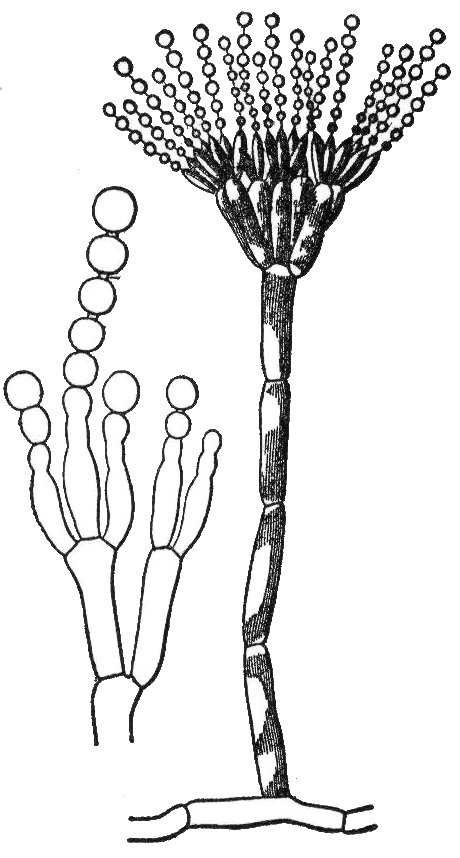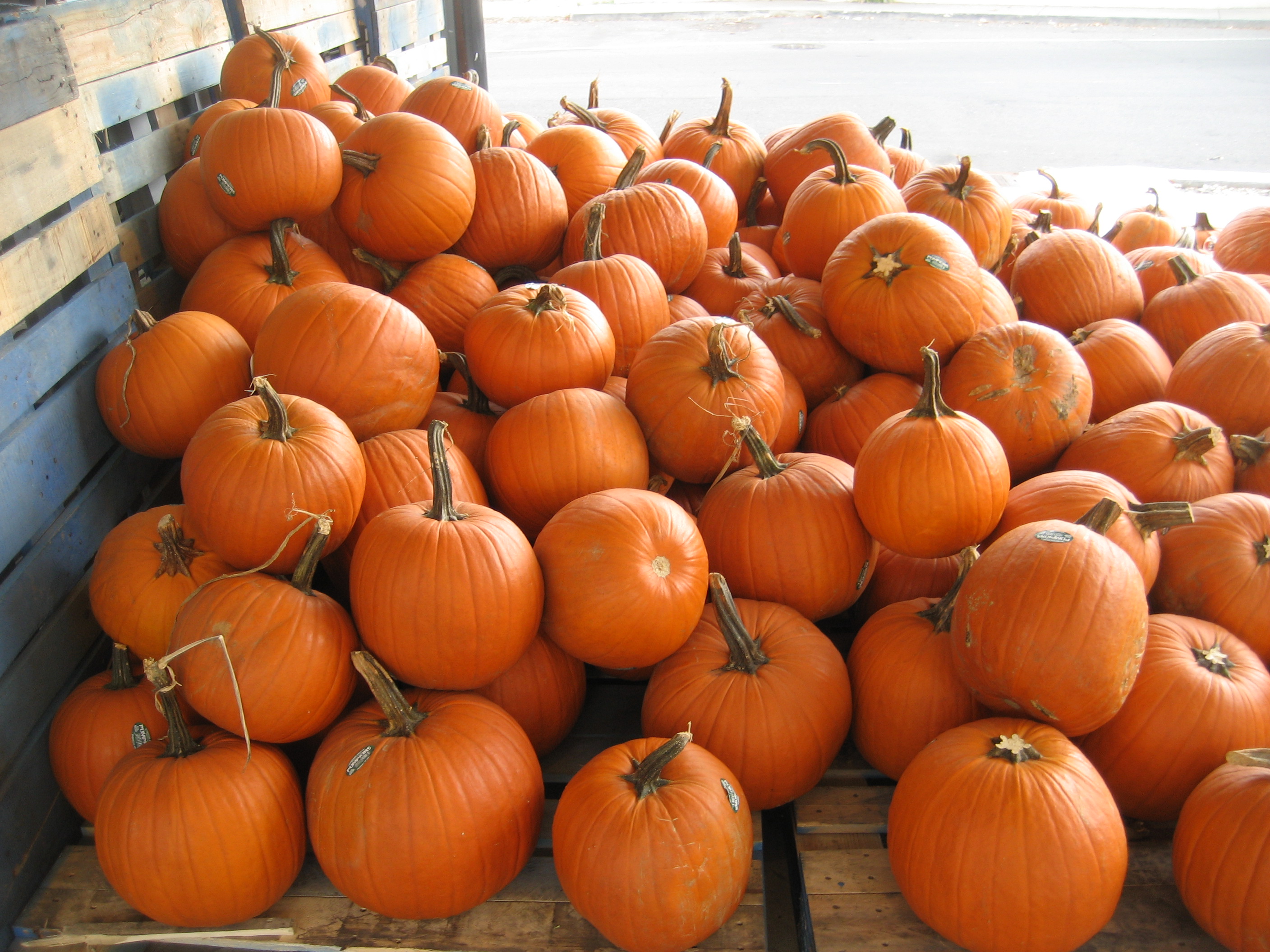|
Septoria Cucurbitacearum
''Septoria cucurbitacearum'' is a fungal plant pathogen infecting cucurbits. Symptoms of Septoria leaf spot are similar on all the cucurbits infected. Description Spots are normally circular or occasionally irregular, beige to nearly white in color, measuring 1 to 2 mm in diameter or occasionally larger on the upper leaf surface. A narrow brown border surrounds the spot and, with age, the lesion may crack. When the disease first appears in the spring under moist conditions, the spots appear with or without a white speck surrounded by a much larger brown water-soaked border, giving the appearance of a different disease. The distinguishing sign on older spots is the presence of small, black, speck-like fruiting bodies called pycnidia embedded within the tissue. Not all spots will contain pycnidia, but some may contain up to eight or more. The black specks can be seen with an unaided eye. Under moist conditions, long, thin, needle-like conidia are released. Small (1 to 2&nbs ... [...More Info...] [...Related Items...] OR: [Wikipedia] [Google] [Baidu] |
Pier Andrea Saccardo
Pier Andrea Saccardo (23 April 1845 in Treviso, Province of Treviso, Treviso – 12 February 1920 in Padua, Italy, Padua) was an Italian botany, botanist and mycology, mycologist. His multi-volume ''Sylloge Fungorum'' was one of the first attempts to produce a comprehensive list of identified fungi, using their spore-bearing structures for classification. He was elected to the Linnean Society of London, Linnean Society in 1916 as a foreign member. He also authored a color classification system that he called ''Chromotaxia'' and contributed to the Italian translation of Charles Darwin's Insectivorous Plants. Life Saccardo was born in the wine growing region of Selva di Montello to Elena Vidotto and engineer Francesco di Selva. He studied at gymnasium of the Venice seminary, the Lyceum in Venice, and then at the Technical Institute of the University of Padua from 1864. At the age of fourteen, he had already put together a herbarium and had made collections of the insects of Trevis ... [...More Info...] [...Related Items...] OR: [Wikipedia] [Google] [Baidu] |
Fungus
A fungus (: fungi , , , or ; or funguses) is any member of the group of eukaryotic organisms that includes microorganisms such as yeasts and mold (fungus), molds, as well as the more familiar mushrooms. These organisms are classified as one of the kingdom (biology)#Six kingdoms (1998), traditional eukaryotic kingdoms, along with Animalia, Plantae, and either Protista or Protozoa and Chromista. A characteristic that places fungi in a different kingdom from plants, bacteria, and some protists is chitin in their cell walls. Fungi, like animals, are heterotrophs; they acquire their food by absorbing dissolved molecules, typically by secreting digestive enzymes into their environment. Fungi do not photosynthesize. Growth is their means of motility, mobility, except for spores (a few of which are flagellated), which may travel through the air or water. Fungi are the principal decomposers in ecological systems. These and other differences place fungi in a single group of related o ... [...More Info...] [...Related Items...] OR: [Wikipedia] [Google] [Baidu] |
Pycnidium
A pycnidium (plural pycnidia) is an asexual fruiting body produced by mitosporic fungi, for instance in the order Sphaeropsidales ( Deuteromycota, Coelomycetes) or order Pleosporales (Ascomycota, Dothideomycetes). It is often spherical or inversely pearshaped ( obpyriform) and its internal cavity is lined with conidiophore A conidium ( ; : conidia), sometimes termed an asexual chlamydospore or chlamydoconidium (: chlamydoconidia), is an Asexual reproduction, asexual, non-motility, motile spore of a fungus. The word ''conidium'' comes from the Ancient Greek word f ...s. When ripe, an opening generally appears at the top, through which the pycnidiospores escape. References {{reflist Further reading *Kulik, Martin M. "Symptomless infection, persistence, and production of pycnidia in host and non-host plants by Phomopsis batatae, Phomopsis phaseoli, and Phomopsis sojae, and the taxonomic implications." Mycologia(1984): 274–291. *Calpouzos, L., and D. B. Lapis. "Effects ... [...More Info...] [...Related Items...] OR: [Wikipedia] [Google] [Baidu] |
Conidium
A conidium ( ; : conidia), sometimes termed an asexual chlamydospore or chlamydoconidium (: chlamydoconidia), is an Asexual reproduction, asexual, non-motility, motile spore of a fungus. The word ''conidium'' comes from the Ancient Greek word for dust, ('). They are also called mitospores due to the way they are generated through the cellular process of mitosis. They are produced exogenously. The two new haploid cells are genetically identical to the haploid parent, and can develop into new organisms if conditions are favorable, and serve in biological dispersal. Asexual reproduction in ascomycetes (the phylum Ascomycota) is by the formation of conidia, which are borne on specialized stalks called conidiophores. The Morphology (biology), morphology of these specialized conidiophores is often distinctive between species and, before the development of molecular techniques at the end of the 20th century, was widely used for identification of (''e.g.'' ''Metarhizium#Species, Metarh ... [...More Info...] [...Related Items...] OR: [Wikipedia] [Google] [Baidu] |
Erumpent
{{Short pages monitor ... [...More Info...] [...Related Items...] OR: [Wikipedia] [Google] [Baidu] |
Butternut Squash
Butternut squash (a variety of ''Cucurbita moschata''), known in Australia and New Zealand as butternut pumpkin or gramma, is a type of winter squash that grows on a vine. It has a Sweetness, sweet, Nut (fruit), nutty taste similar to that of a pumpkin. It has tan-yellow skin and orange fleshy pulp with a compartment of seeds in the blossom end. When ripening, the flesh turns increasingly deep orange due to its rich content of Β-Carotene, beta-carotene, a provitamin A compound. Although botanically a fruit (specifically, a Berry (botany), berry), butternut squash is used culinarily as a vegetable that can be Roasting, roasted, Sautéing, sautéed, puréed for Soup, soups such as squash soup, or mashed to be used in Casserole, casseroles, Bread, breads, Muffin, muffins, and Pie, pies. It is part of the same Squash plant, squash family as ponca, waltham, pumpkin, and calabaza. History The word ''squash'' comes from the Narragansett language, Narragansett word ''askutasquash'' ... [...More Info...] [...Related Items...] OR: [Wikipedia] [Google] [Baidu] |
Pumpkin
A pumpkin is a cultivar, cultivated winter squash in the genus ''Cucurbita''. The term is most commonly applied to round, orange-colored squash varieties, but does not possess a scientific definition. It may be used in reference to many different squashes of varied appearance and belonging to multiple species in the ''Cucurbita'' genus. The use of the word "pumpkin" is thought to have originated in New England in North America, derived from a word for melon, or a native word for round. The term is sometimes used interchangeably with "Cucurbita, squash" or "winter squash", and is commonly used for some cultivars of ''Cucurbita argyrosperma'', ''Cucurbita ficifolia'', ''Cucurbita maxima'', ''Cucurbita moschata'', and ''Cucurbita pepo''. ''C. pepo'' pumpkins are among the oldest known domesticated plants, with evidence of their cultivation dating to between 7000 BCE and 5500 BCE. Wild species of ''Cucurbita'' and the earliest domesticated species are native to North America (p ... [...More Info...] [...Related Items...] OR: [Wikipedia] [Google] [Baidu] |
Septoria
''Septoria'' is a genus of fungal plant pathogens in the phylum Ascomycota. They cause necrotic leaf spots on the leaves of their hosts, producing filiform or cylindrical conidia inside pycnidia embedded in the leaves. Economically important species cause diseases on field crops, Fodder, forages, and vegetables. The genus is widespread, and estimated to contain 1072 species. Notable species ''Septoria apiicola'' is the cause of late blight of celery. It can survive on seeds, causing disease in the seedlings when they germinate. Several species of Passiflora, passion flower are infected by several species of ''Septoria''. One species, initially thought to be ''Septoria passiflorae'', but actually an undescribed species, has been used to control the invasive species, invasive ''Passiflora tarminiana'' in Hawai'i. Dispersal The pycnidia produce conidia, which are pushed out through an opening. They are spread by splashing rain. Taxonomy In 2013, two large volumes (about 80 pages ... [...More Info...] [...Related Items...] OR: [Wikipedia] [Google] [Baidu] |
Colletotrichum Orbiculare
''Colletotrichum orbiculare'' is a plant pathogen of melons and cucumber. It causes the disease anthracnose that can effect curcubits causing lesions on various parts of the plant. It can effect cucumbers, melon, squash, watermelon and pumpkin, especially when the weather is rainy, humid and warm. It can be transmitted by seed as well as soil and survive between crops. It is also spread by feeding cucumber beetles, splashing water, tools and workers. Efforts to control the fungus include the practice of rotating cucurbits out for a 2-year period, planting cultivars with resistance, burning infected crops and careful control of weeds. Chemical control measures are also available. Management Partners of the CABI CABI (in various spellings) is an abbreviation that may refer to: * Centre for Agriculture and Bioscience International (CABI, sometimes also referred to as CAB International), a UK-based nonprofit inter-governmental organisation for scientific res ...-led programme, ... [...More Info...] [...Related Items...] OR: [Wikipedia] [Google] [Baidu] |
Colletotrichum Coccodes
''Colletotrichum coccodes'' is a plant pathogen, which causes anthracnose on tomato and black dot disease of potato. Fungi survive on crop debris and disease emergence is favored by warm temperatures and wet weather. Hosts and symptoms ''C. coccodes'' is known for infecting potato and tomato, and is primarily a pathogen of Solanaceous plants more generally. Heilmann ''et al.'', 2006 characterizes genetic varieties and their associations with particular potato hosts. Buddie ''et al.'', 1999, finds strawberry is also a host. ''C. coccodes'' has a large host range beyond those including some Cucurbitaceae, Fabaceae, and Solanaceae. ''C. coccodes'' can cause lesions, twisted leaves, and a bleached color on onion. On tomato, can see that there are sunken in dark spots. As the disease continues to develop can begin to see spots that are rotting. The pathogen can infect both green and ripe fruit; spots are not evident on green right away, but over time they develop. Symptoms are ... [...More Info...] [...Related Items...] OR: [Wikipedia] [Google] [Baidu] |
Fungal Fruit Diseases
A fungus (: fungi , , , or ; or funguses) is any member of the group of eukaryotic organisms that includes microorganisms such as yeasts and molds, as well as the more familiar mushrooms. These organisms are classified as one of the traditional eukaryotic kingdoms, along with Animalia, Plantae, and either Protista or Protozoa and Chromista. A characteristic that places fungi in a different kingdom from plants, bacteria, and some protists is chitin in their cell walls. Fungi, like animals, are heterotrophs; they acquire their food by absorbing dissolved molecules, typically by secreting digestive enzymes into their environment. Fungi do not photosynthesize. Growth is their means of mobility, except for spores (a few of which are flagellated), which may travel through the air or water. Fungi are the principal decomposers in ecological systems. These and other differences place fungi in a single group of related organisms, named the ''Eumycota'' (''true fungi'' or ''Eumycete ... [...More Info...] [...Related Items...] OR: [Wikipedia] [Google] [Baidu] |
Vegetable Diseases
Vegetables are edible parts of plants that are consumed by humans or other animals as food. This original meaning is still commonly used, and is applied to plants collectively to refer to all edible plant matter, including flowers, fruits, stems, leaves, roots, and seeds. An alternative definition is applied somewhat arbitrarily, often by culinary and cultural tradition; it may include savoury fruits such as tomatoes and courgettes, flowers such as broccoli, and seeds such as pulses, but exclude foods derived from some plants that are fruits, flowers, nuts, and cereal grains. Originally, vegetables were collected from the wild by hunter-gatherers and entered cultivation in several parts of the world, probably during the period 10,000 BC to 7,000 BC, when a new agricultural way of life developed. At first, plants that grew locally were cultivated, but as time went on, trade brought common and exotic crops from elsewhere to add to domestic types. Nowadays, most ... [...More Info...] [...Related Items...] OR: [Wikipedia] [Google] [Baidu] |





